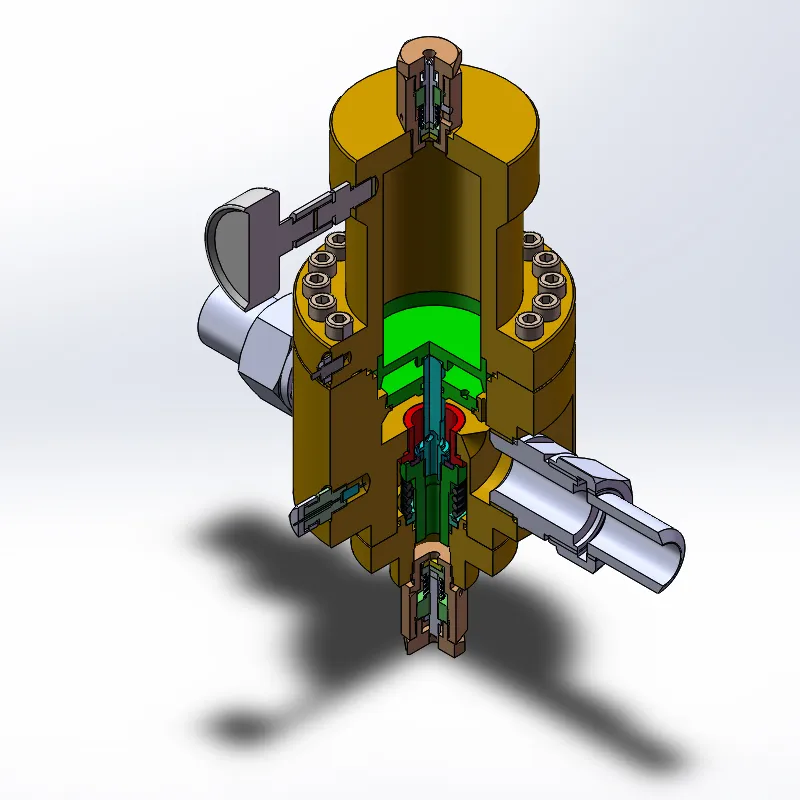
Oct . 18, 2024 13:24
Back to list
Understanding the Functionality of Natural Gas Pressure Regulation Devices in Home Systems
Understanding Natural Gas Pressure Reducers Importance and Functionality
Natural gas is a crucial energy resource that powers homes, industries, and transportation around the globe. However, transporting natural gas from extraction points to end users requires a delicate balance of pressure management to ensure safety and efficiency. One critical component in this process is the natural gas pressure reducer, also known as a pressure regulator.
What is a Natural Gas Pressure Reducer?
A natural gas pressure reducer is a device designed to lower the pressure of natural gas coming from high-pressure pipelines to a safe, usable level suitable for residential or commercial distribution. High-pressure gas can be hazardous; therefore, pressure reducers play a vital role in both safety and functionality within gas supply systems.
How Does It Work?
The basic operation of a pressure reducer revolves around a mechanical valve that automatically adjusts and maintains the desired outlet pressure, regardless of fluctuations in the inlet pressure. When high-pressure natural gas enters the reducer, it encounters a diaphragm mechanism triggered by the gas pressure. As the diaphragm moves, it opens or closes the valve to regulate the output pressure effectively.
Most pressure reducers are designed with two key pressure settings the inlet pressure (high pressure coming from the supply) and the outlet pressure (the final pressure delivered to the customer). The reducer ensures that the outlet pressure remains within an acceptable range, generally between 7 to 14 inches of water column for residential use, depending on local standards and the appliances connected to the system.
Types of Pressure Reducers
Natural gas pressure reducers come in various designs to cater to different applications
. They can be broadly classified into two categories1. First Stage Regulators These are usually found in high-pressure gas systems where gas is initially reduced from a very high pressure to a lower one, generally used in bulk transportation systems.
2. Second Stage Regulators Commonly utilized in residential applications, these take the already reduced pressure from the first stage and lower it further to a level that is safe for consumption by household appliances.
natural gas pressure reducer

Importance of Regular Maintenance
Like any mechanical system, natural gas pressure reducers require regular maintenance to function optimally. Inspection of seals, diaphragms, and springs, along with regular testing for leaks, can prevent malfunctions that could result in dangerous gas leaks or service interruptions. A qualified technician should perform these checks to comply with local safety regulations and standards.
Safety Features
Modern natural gas pressure reducers are equipped with safety features that protect against abnormal pressure levels. For instance, relief valves are designed to vent excess pressure in case of a malfunction, preventing potential hazards such as gas explosions or system damage. Regular maintenance and monitoring of these safety features are critical to ensuring the overall integrity of the gas supply system.
Regulatory Standards
In many regions, pressure reducers must comply with specific regulatory standards set by government bodies or industry organizations. These standards ensure that the devices are safe for operation, efficient in their performance, and durable enough to withstand various environmental conditions. By adhering to these regulations, manufacturers and operators can minimize risks and enhance the reliability of natural gas distribution.
The Future of Pressure Reduction Technology
As the demand for natural gas continues to grow, advancements in pressure regulation technologies are underway. Innovations such as smart regulators featuring IoT capabilities allow for real-time monitoring and control of gas pressure levels. Such technologies not only enhance safety but also improve energy efficiency across the distribution network.
Moreover, as the focus on sustainability increases, pressure reducers play a role in facilitating the transition to greener energy alternatives. Efficient pressure management systems can make the use of natural gas more environmentally friendly by reducing waste and optimizing usage.
Conclusion
Natural gas pressure reducers are often overlooked components in the complex web of gas supply systems, yet they play a pivotal role in ensuring safe and efficient gas delivery. Understanding their functionality, types, maintenance needs, and the technological advancements on the horizon is essential for both consumers and industry professionals. As we continue to rely on natural gas as a primary energy source, the importance of these devices will only grow, underscoring the need for ongoing attention to their operation and safety.
Latest news
-
Safety Valve Spring-Loaded Design Overpressure ProtectionNewsJul.25,2025
-
Precision Voltage Regulator AC5 Accuracy Grade PerformanceNewsJul.25,2025
-
Natural Gas Pressure Regulating Skid Industrial Pipeline ApplicationsNewsJul.25,2025
-
Natural Gas Filter Stainless Steel Mesh Element DesignNewsJul.25,2025
-
Gas Pressure Regulator Valve Direct-Acting Spring-Loaded DesignNewsJul.25,2025
-
Decompression Equipment Multi-Stage Heat Exchange System DesignNewsJul.25,2025

